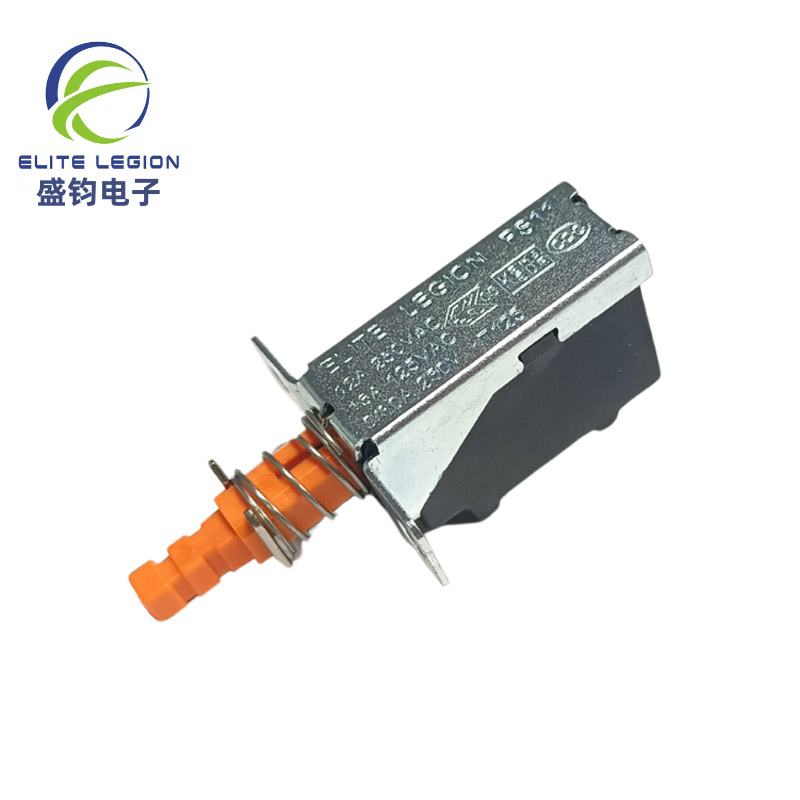- English
- Esperanto
- icelandic
- беларускі
- O'zbek
- Hawaiian
- Español
- Português
- русский
- Français
- 日本語
- Deutsch
- tiếng Việt
- Italiano
- Nederlands
- ภาษาไทย
- Polski
- 한국어
- Svenska
- magyar
- Malay
- বাংলা ভাষার
- Dansk
- Suomi
- हिन्दी
- Pilipino
- Türkçe
- Gaeilge
- العربية
- Indonesia
- Norsk
- český
- ελληνικά
- український
- Javanese
- नेपाली
- Burmese
- български
- ລາວ
- Latine
- Қазақша
- Euskal
- Azərbaycan
- Lietuvos
- Eesti Keel
- Română
- Srpski језик
- فارسی
- தமிழ்
- తెలుగు
What Are the Best Practices for Using Push Switches in Your Design?

What are the advantages of using push switches?
Compared to other types of switches, push switches are relatively easy to use, inexpensive, and durable. Additionally, they are available in a wide variety of styles and sizes, allowing them to be used in a range of different applications. Push switches also tend to be less prone to accidental activation, as they typically require deliberate and intentional pressure on the button to activate the circuit.
What are the different types of push switches?
There are several different types of push switches that are commonly used in electronic devices, including momentary switches, latching switches, and rocker switches. Momentary switches only stay on as long as the button is pressed, while latching switches remain in the on or off state until the button is pressed again. Rocker switches are designed to rock back and forth between two positions, making them particularly useful for applications where the switch needs to be easily visible or accessible.
What factors should be considered when selecting a push switch?
When selecting a push switch for your design, there are several factors that should be considered, such as the size and shape of the button, the type of circuit the switch will be used in, and the electrical requirements of the device. Additionally, the operating force and tactile feedback of the switch should also be taken into account, as these factors can affect the user experience and overall functionality of the device.
What are some best practices for using push switches in your design?
Some best practices for using push switches in your design include selecting a switch that is appropriate for your specific application, properly mounting the switch to ensure it remains secure and stable, and designing the circuit in such a way as to avoid any potential issues, such as accidental activation or circuit failure. Additionally, it is important to carefully consider the placement and visibility of the switch to ensure it is easily accessible and visible to the user.
In conclusion, push switches are a versatile and reliable type of button that is commonly used in countless electronic devices. By understanding the different types of switches available, the factors to consider when selecting a switch, and the best practices for using them in your design, you can ensure that your device is functional, accessible, and user-friendly.
Dongguan Sheng Jun Electronic Co., Ltd. is a company that specializes in the design, development, and manufacturing of a wide range of electronic components, including push switches. With a commitment to quality, innovation, and customer satisfaction, Sheng Jun is dedicated to providing high-quality products and excellent service to clients around the world. If you have any questions or would like to learn more about our company and products, please feel free to contact us at legion@dglegion.com.
References
1. Smith, J. (2019). The Role of Push Switches in Modern Electronic Devices. Journal of Electronic Design, 14(3), 45-52.
2. Jameson, T. (2016). Choosing the Right Push Switch for Your Application. Electronic Component News, 22(2), 17-21.
3. Patel, A. (2018). A Comprehensive Guide to Using Push Switches in Electronic Design. International Journal of Electrical Engineering and Technology, 10(4), 35-42.
4. Lee, C. (2017). Push Switches: History, Types, and Applications. Electrical Engineering Today, 11(1), 28-33.
5. Kim, S. (2015). Best Practices for Using Push Switches in Consumer Electronics. Journal of Consumer Electronics, 4(2), 55-62.
6. Johnson, R. (2014). Getting the Most Out of Your Push Switches. Electronic Component World, 18(4), 12-16.
7. Wang, L. (2013). Push Switches in Automotive Design: Challenges and Solutions. Journal of Automotive Engineering, 8(1), 23-30.
8. Brown, M. (2012). Push Switches vs. Rocker Switches: Which is Better? Electronic Design Today, 7(3), 19-24.
9. Davis, B. (2011). The Advantages and Disadvantages of Using Push Switches in Industrial Applications. Journal of Industrial Engineering, 6(2), 10-15.
10. Kim, Y. (2010). The Future of Push Switch Technology: An Overview. International Journal of Advanced Technology in Electrical Engineering, 2(1), 5-10.





